Ateliê-Lavrado: A Wapichana Residency
Ateliê-Lavrado: A Wapichana Residency
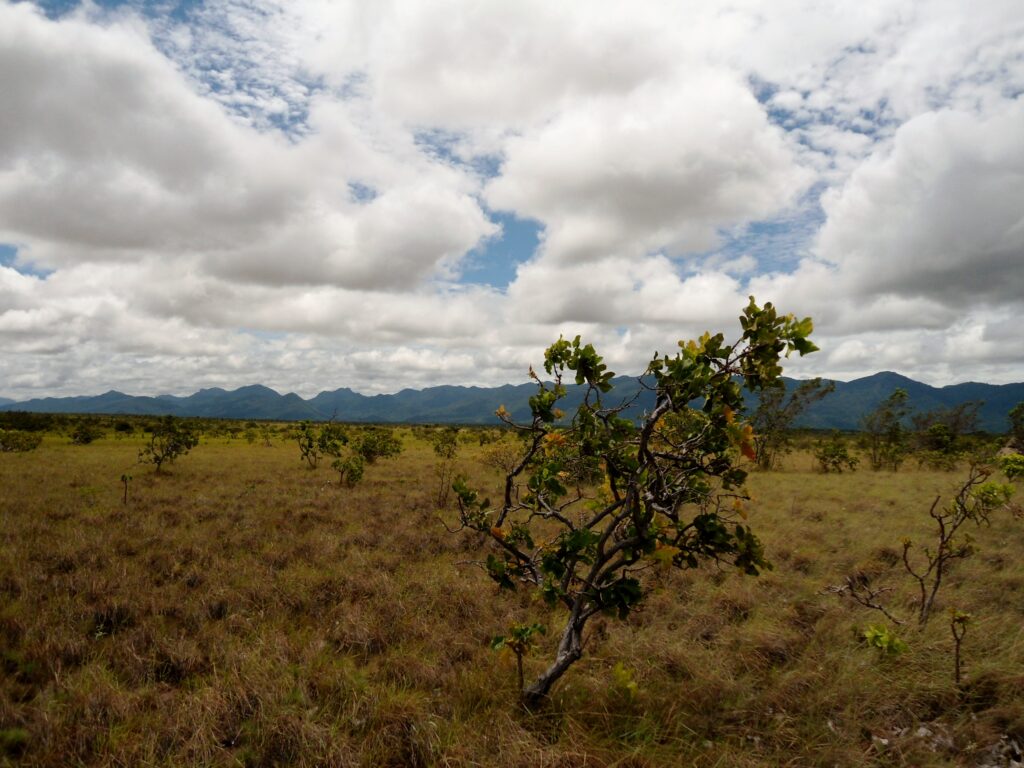
The Wapichana are an Arawak-speaking Amazonian people from northern Brazil and southern Guyana. The colony of British Guiana (1831-1966) separated Wapichana communities from their territory and waterways across English and Portuguese-speaking borderlines. As the first Wapichana members to visit the British Museum’s Wapichana collection, Gustavo Caboco and Roseane Cadete have engaged with these historical and material processes, creating a range of art and community-based practices that respond to the multivalent violence of territorial displacement, whilst ‘threading’ pathways of connection and return for the Wapichana.

The British Museum’s Wapichana collection accounts for more than one hundred objects related to the Wapichana or registered as ‘Wapishana’ or ‘Wapisiana.’ Among the earliest materials related to the Wapichana were brought to London by Robert Hermann Schomburgk, following an expedition to map the colony of British Guiana in the 1830s and that contributed to the separation and displacement of Wapichana communities. Many of these materials were also brought by British pilot and plantation owner Lionel Hector Tracey (L. H. T.) Ashburner, who lived in British Guiana in the 1920s and 1930s.
The Wapichana collection comprises spinning and weaving tools such as spindles, bobbins and needles, beaded aprons, basketry made from local vegetal fibres, alongside rattles, arrows and other organic materials like seeds, cotton threads, and animal teeth. As part of their residency in London, Gustavo and Roseane also accessed historical documentation, such as correspondence between Ashburner and curators, descriptions of Wapichana people, and a typewritten glossary of Wapichana language with English translations.
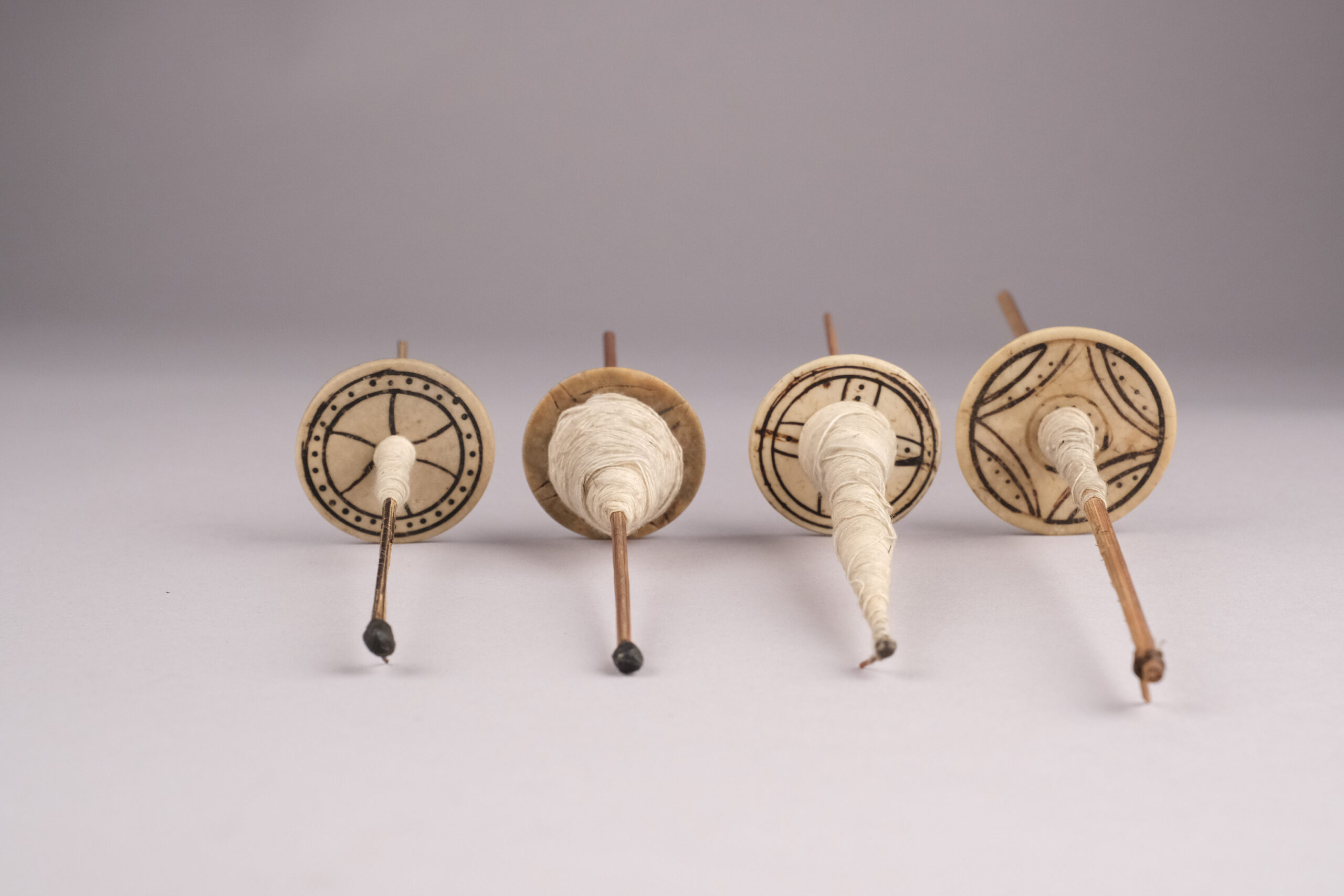
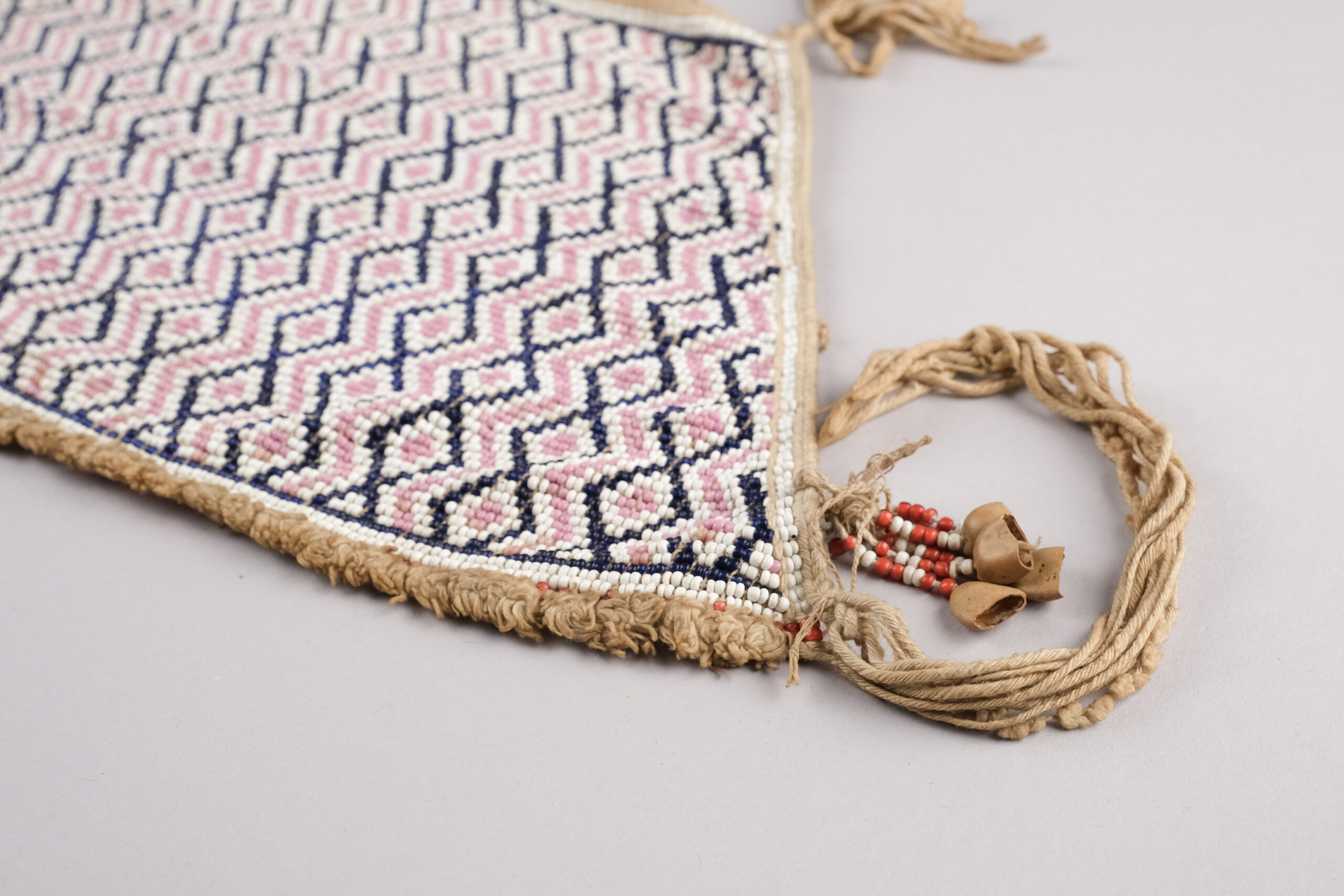
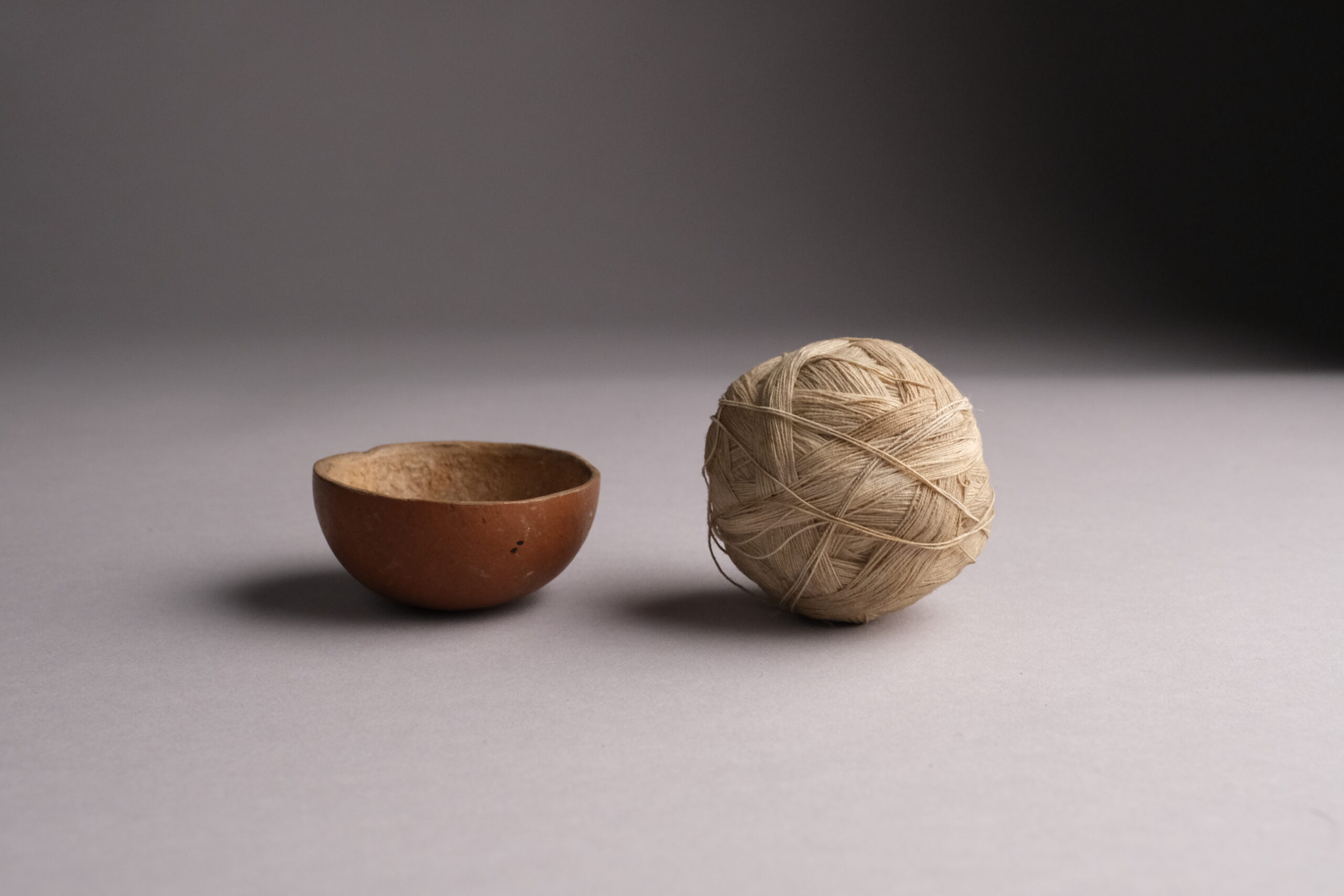
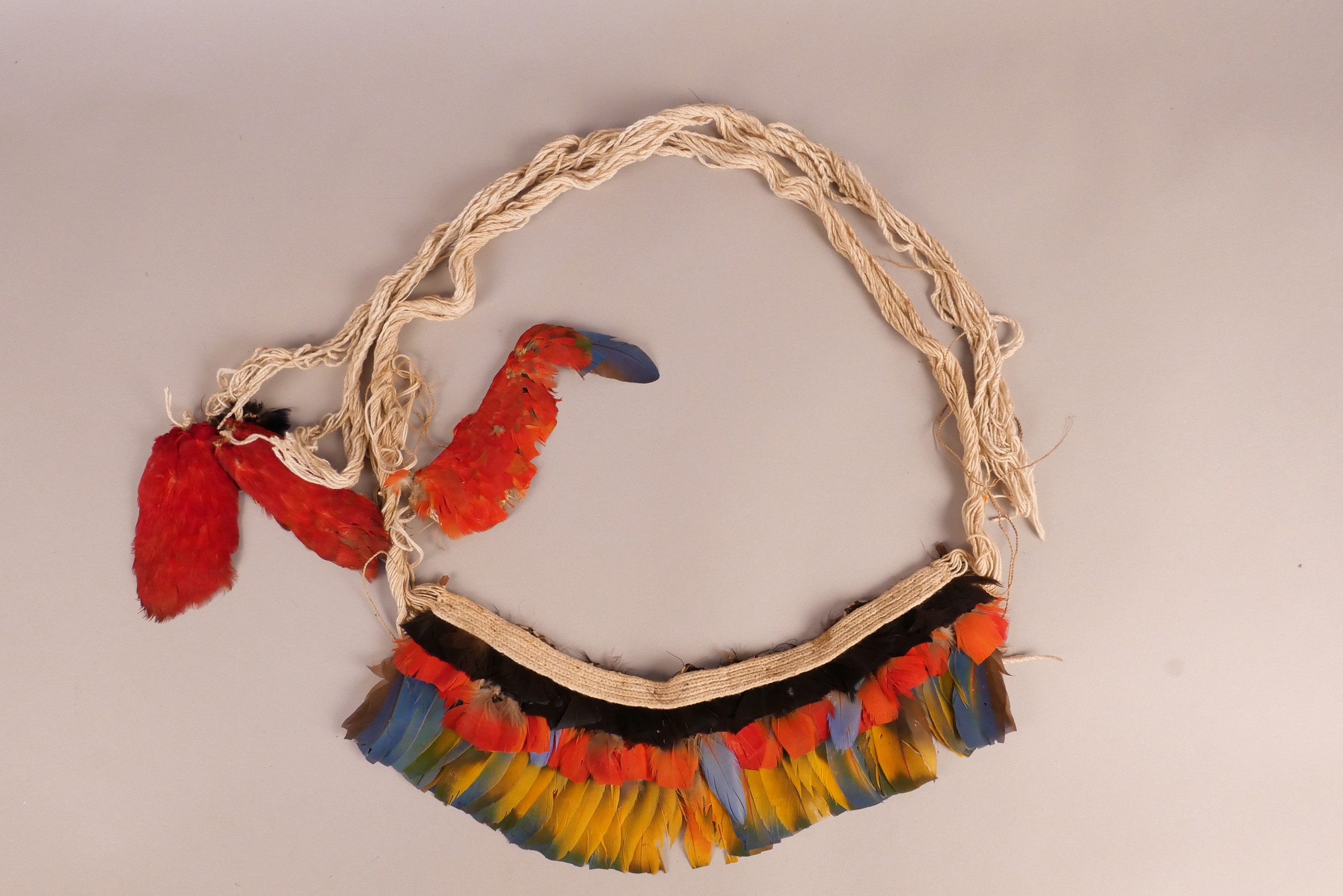
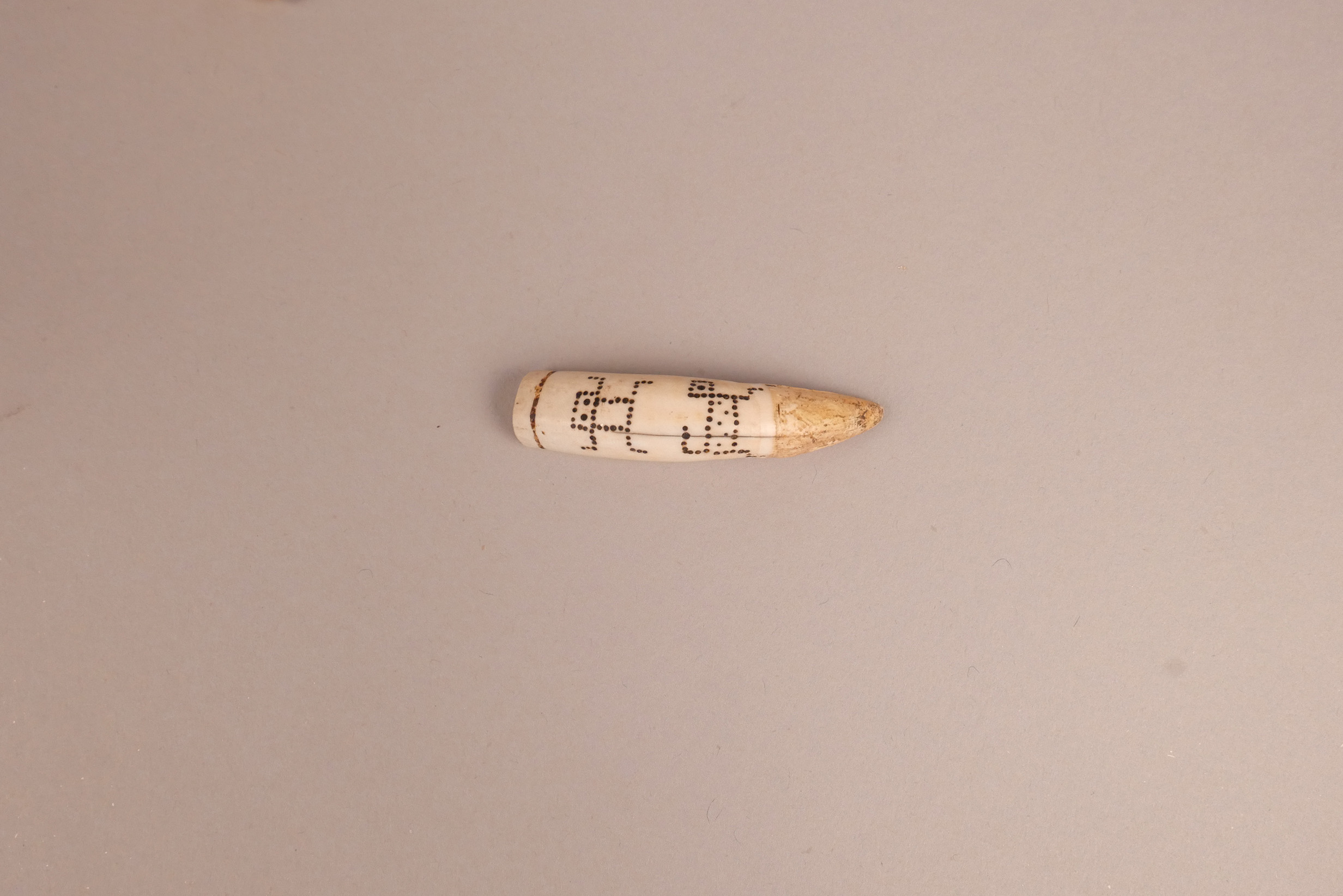
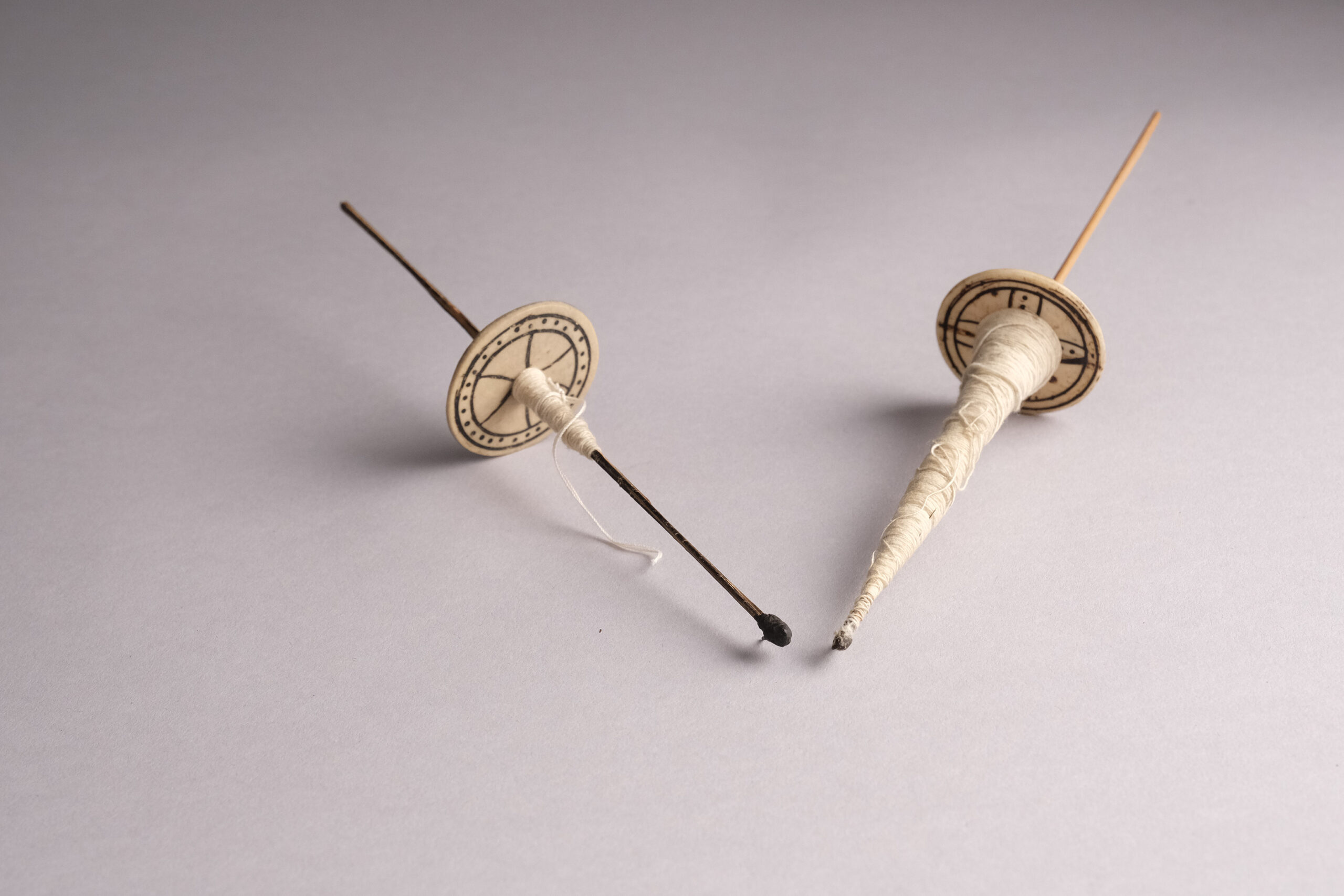
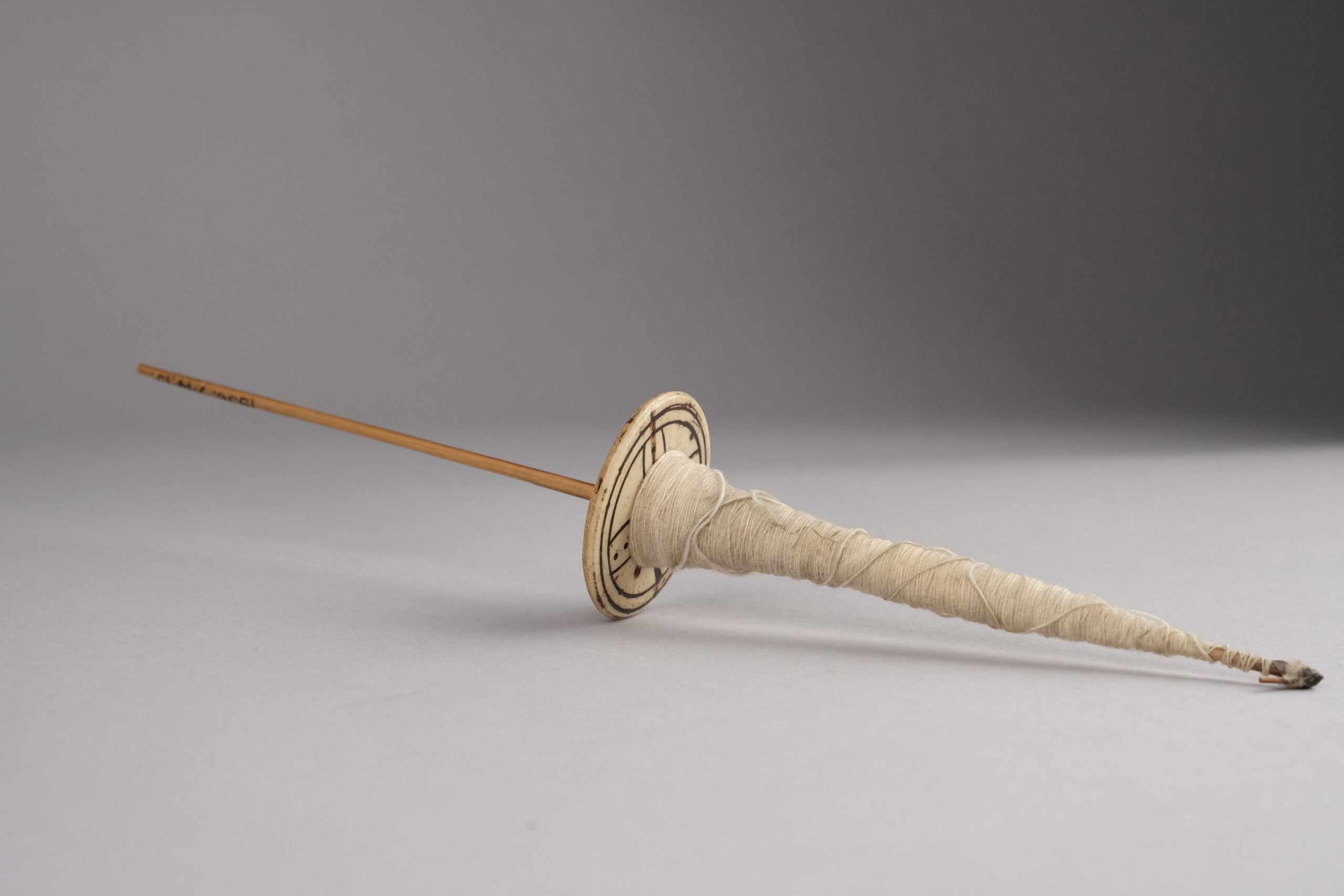
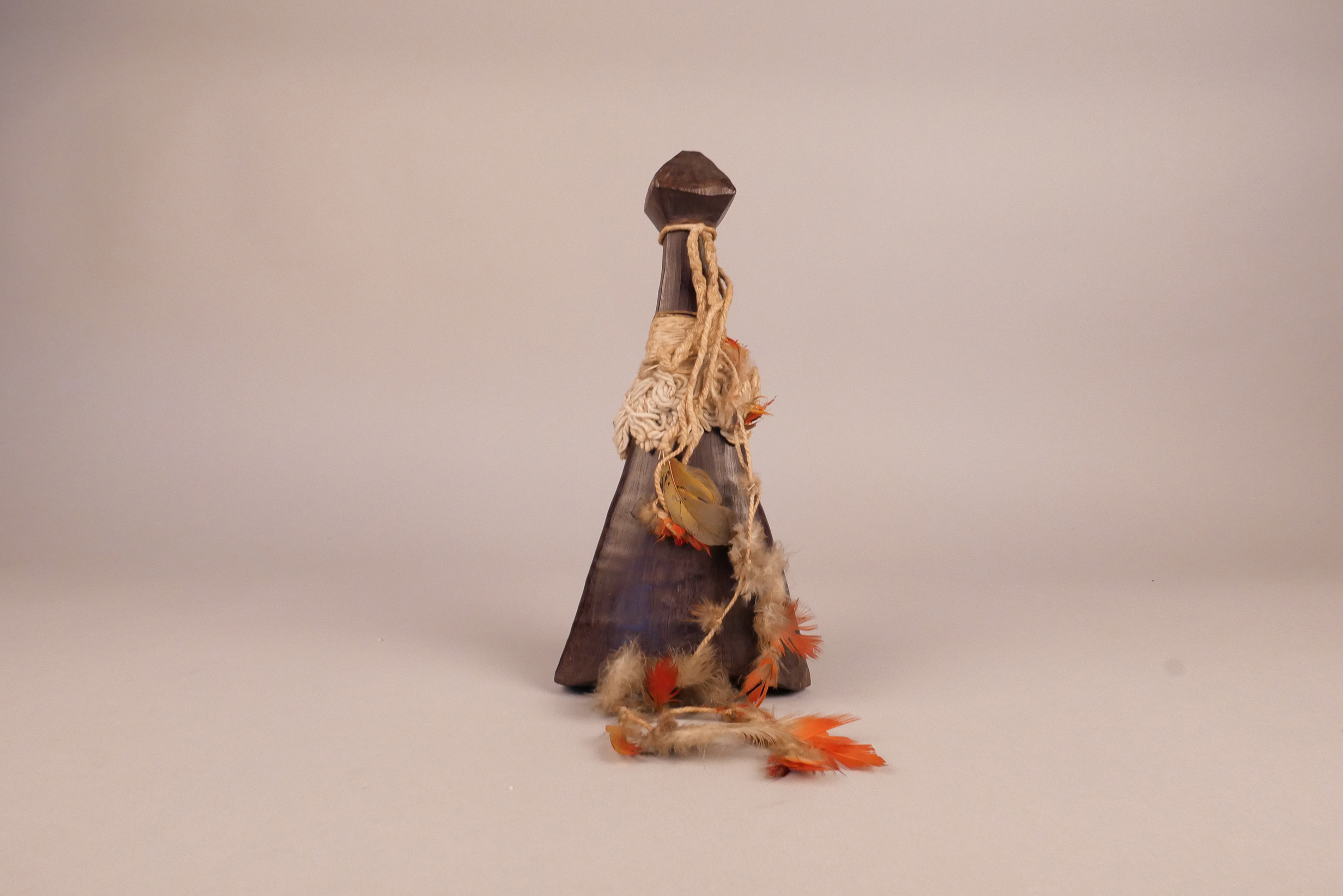
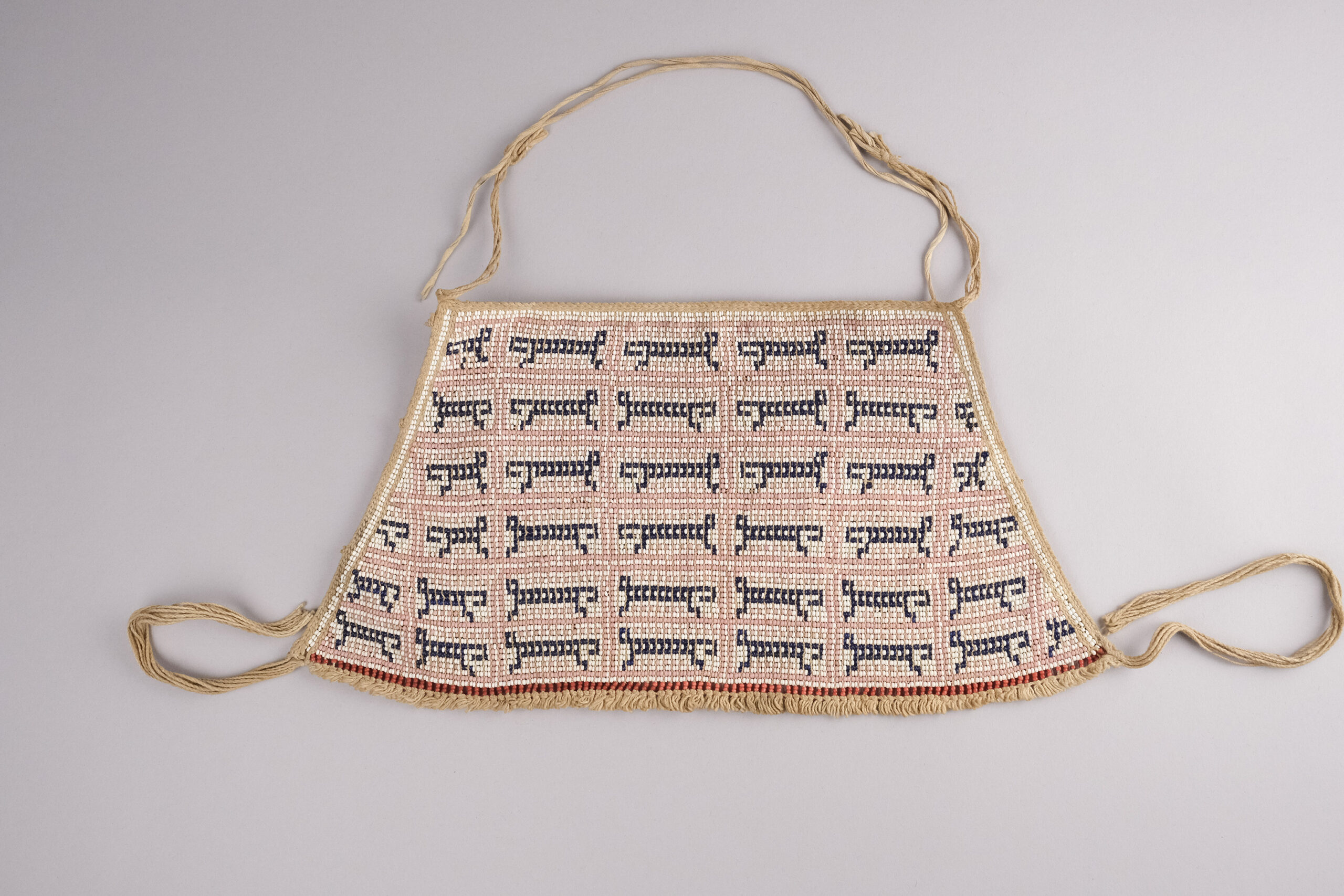
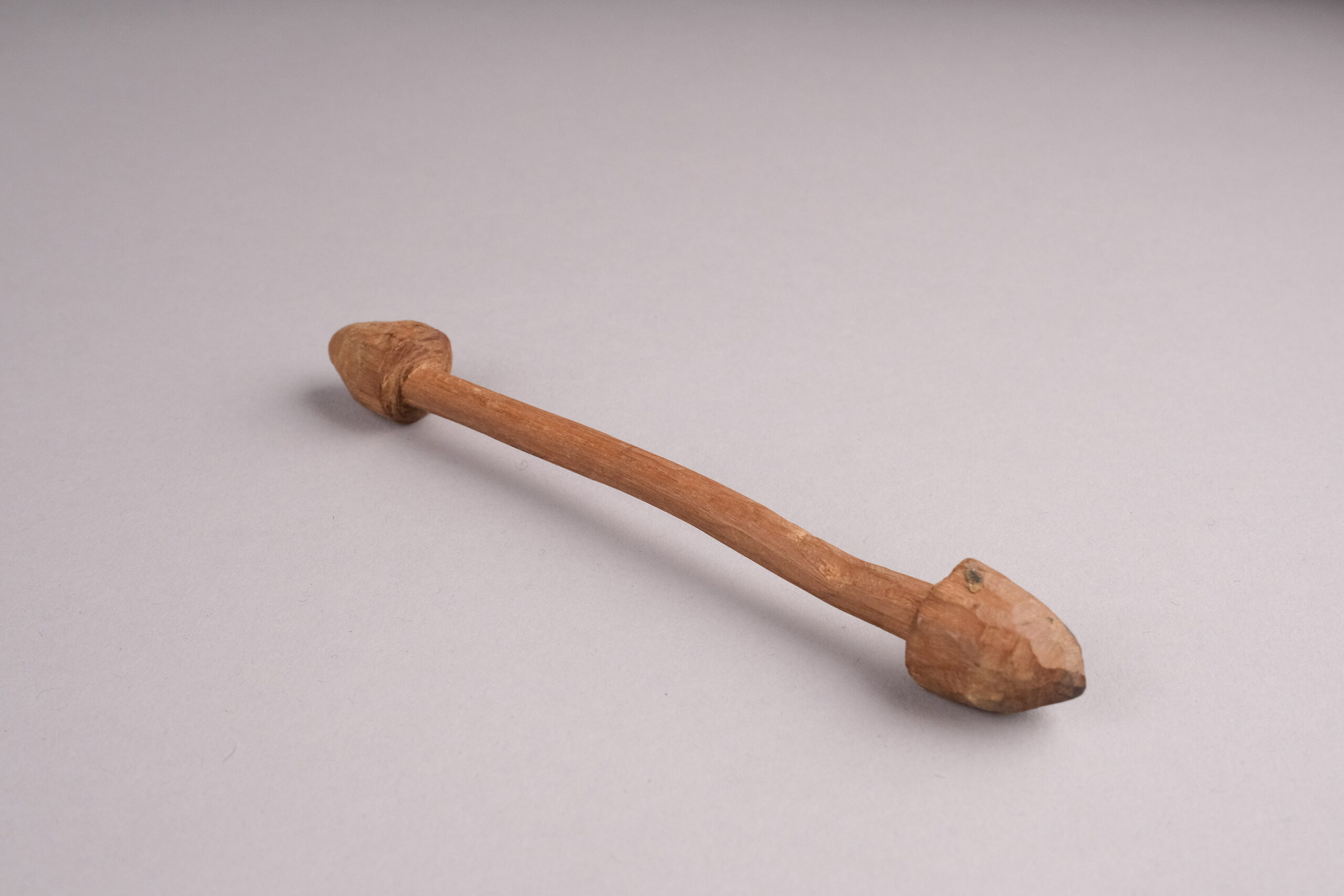
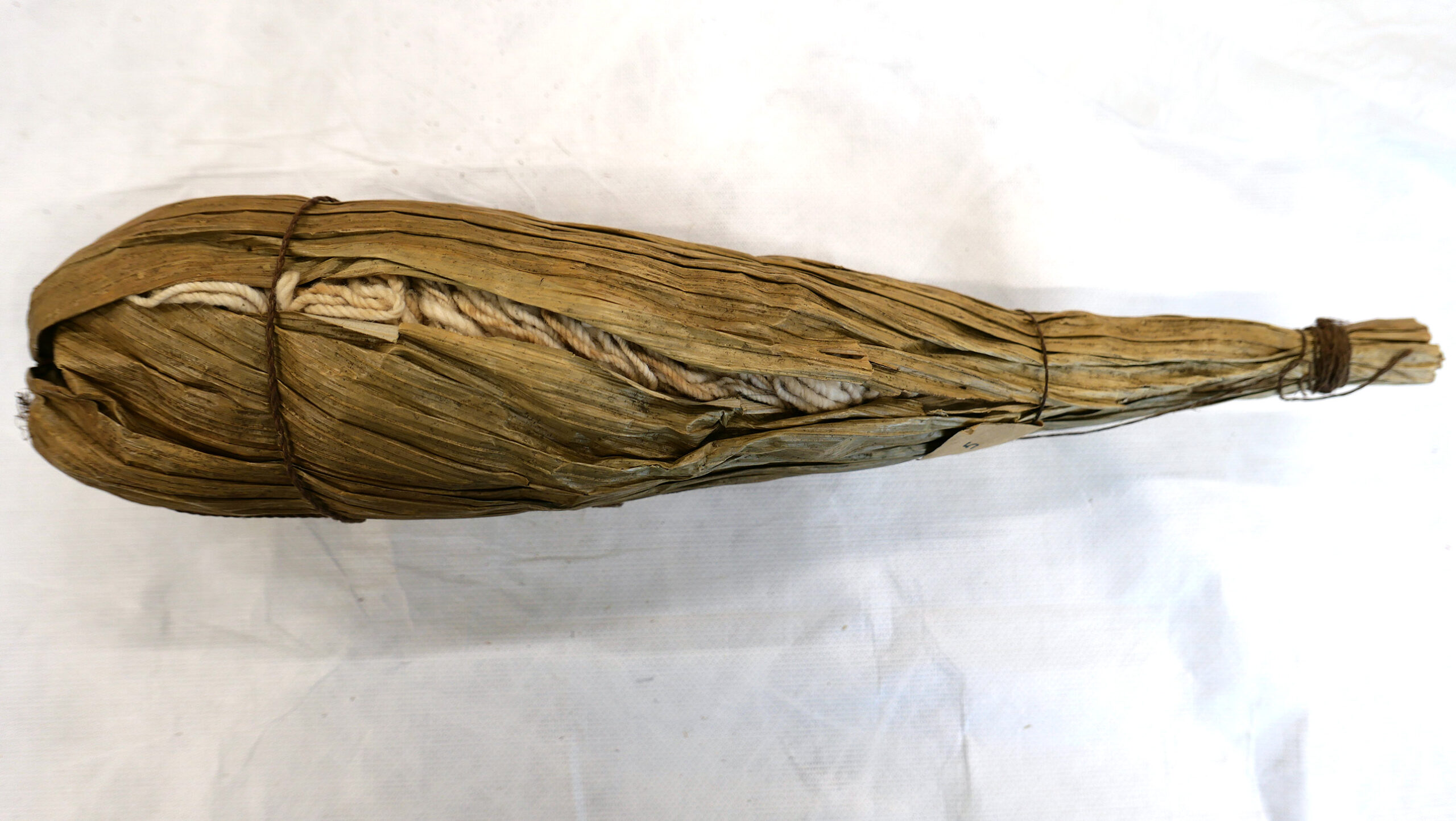
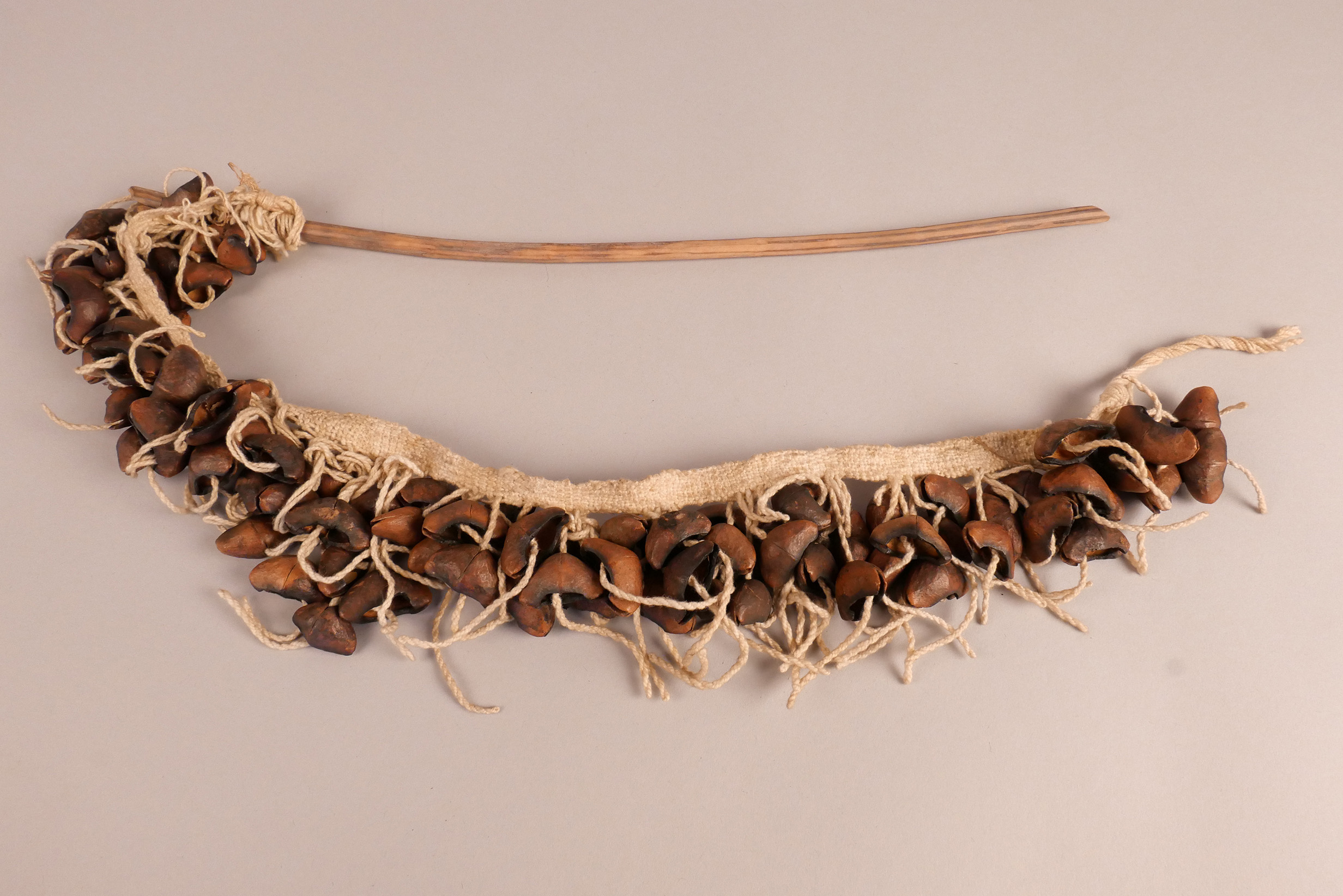
© Trustees of The British Museum
Gustavo and Roseane’s Ateliê-Lavrado project-residency with the Museum’s Wapichana collection began with Wapichana community workshops in the Amazonian state of Roraima, Brazil and continued with a joint visit to London and Oxford, England. Channelling the multisensory and polysemic potential of cotton and related Wapichana practices and tools for hand-spinning cotton into threads, knots, cloths and other kinds of interweavings, the Ateliê-Lavrado prompted a series of collaborative artistic practices, workshops, and public discussions that highlighted the historical significance of their residency for reconnecting Wapichana material and immaterial heritage with living communities.
Beginning in the Cantá municipality, approximately twenty-five kilometres from Boa Vista, capital city of Roraima, Brazil, Gustavo and Roseane participated in a series of workshops with Wapichana members and families from both sides of the Brazil-Guyana border. Photographs of the Museum’s Wapichana materials were also shared and discussed during these workshops.
Extending to six days, these community workshops in Brazil explored Wapichana people’s array of relationships and stories woven around spinning, threading, and sewing. These workshops provided the time and space for collective reflection and creation that likewise informed Gustavo and Roseane’s forthcoming visit to London.

Reflecting on the significance of the cotton plant ready for harvest, Caboco says: “This flower has prompted us to rethink the relationship abysses that stand between our family worlds and communities, as well as to rethink our time”.
During their visit to the UK in June and July 2023, Gustavo and Roseane engaged with archives and materials attributed to the Wapicahna from the British Museum’s collection. In close collaboration with researcher and SDCELAR contributor Dr Jamille Pinheiro Dias (Director of the Centre of Latin American and Caribbean Studies at the University of London’s School of Advanced Study) and SDCELAR curators Magdalena Araus Sieber and Diego Atehortúa, they also conducted research on Wapichana documents and objects from the Pitt Rivers Museum collection in Oxford dated as early as 1907. As an extension of the Ateliê-Lavrado workshop, Gustavo and Roseane responded by documenting their engagement with these Wapichana materials and creating artwork through various modes of representation.
Hear Gustavo and Roseane singing a Wapichana song during their visit to the Pitt Rivers Museum collection in Oxford.
Photo: Lucia Sa, Magdalena Araus Sieber, Ana Didonet, Roseane Cadete, Jamille Pinheiro Dias, Francesca Laura Cavallo, Diego Atehortúa, Gustavo Caboco
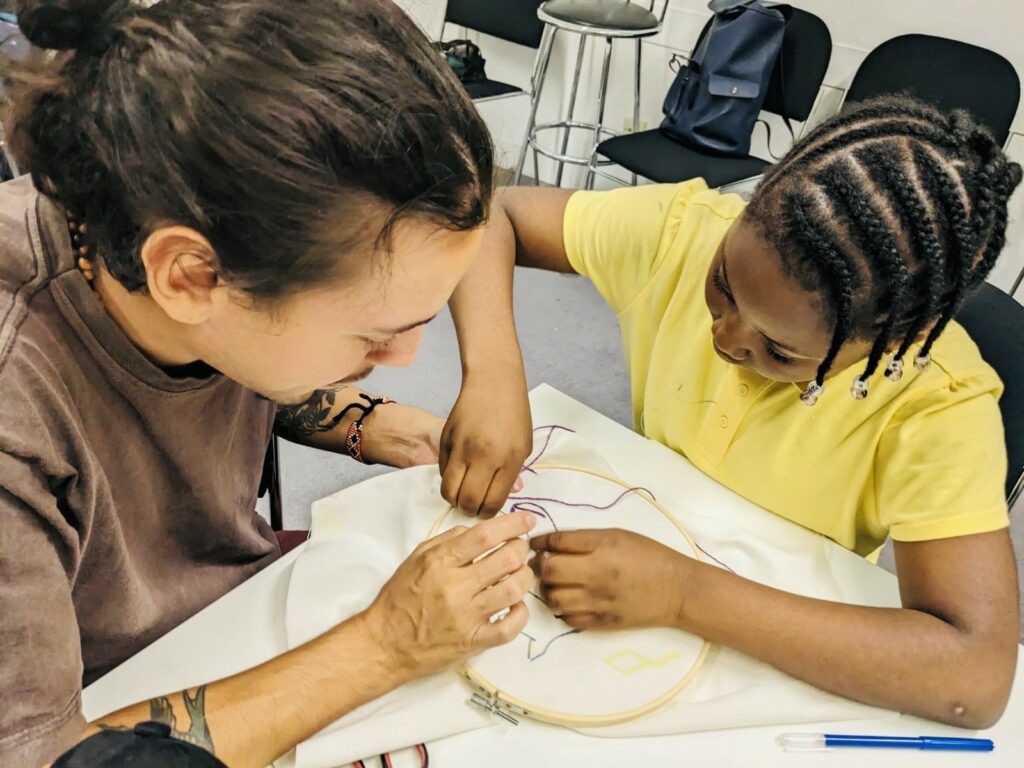
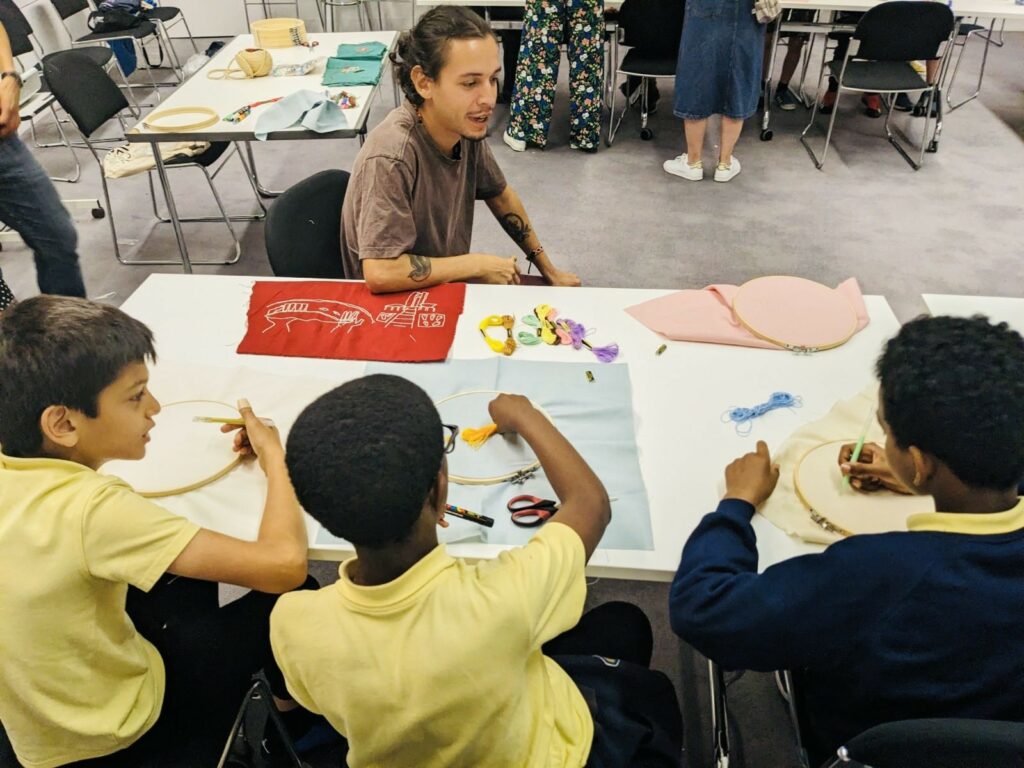
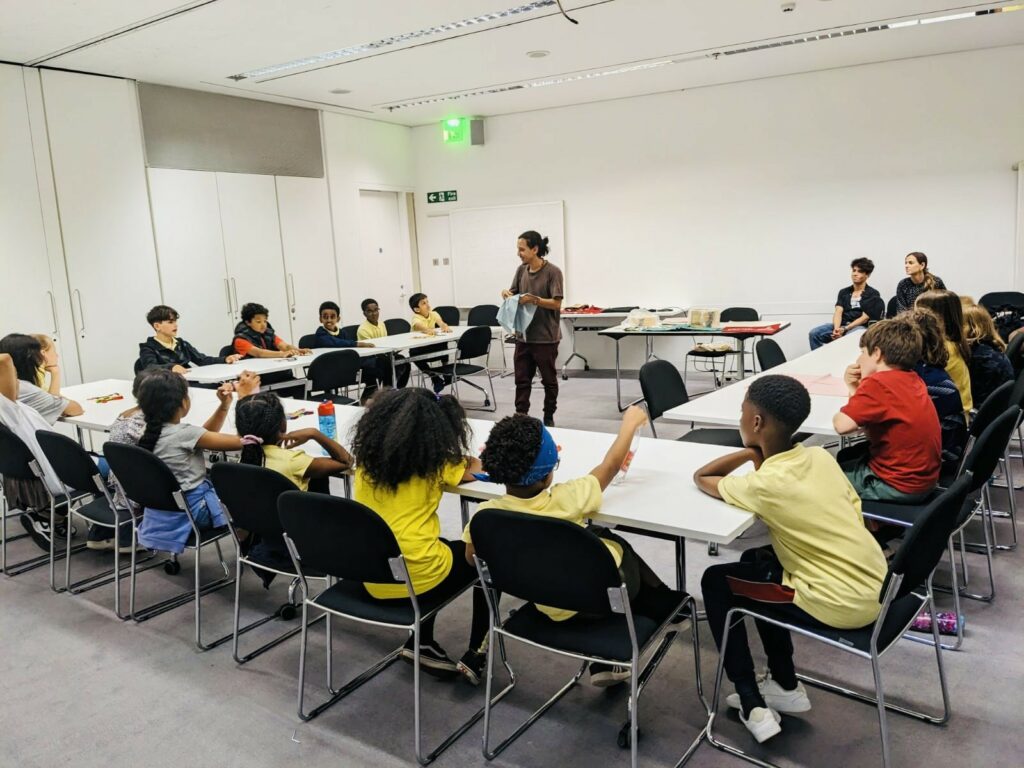
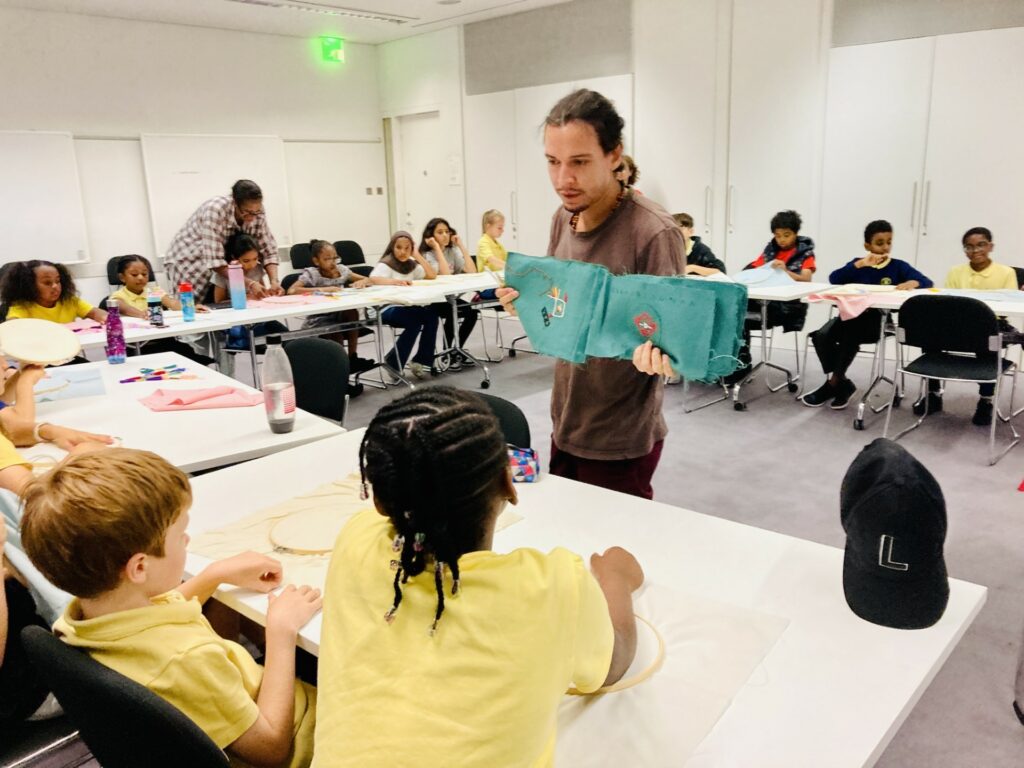
Photos: © Brazil Footprint
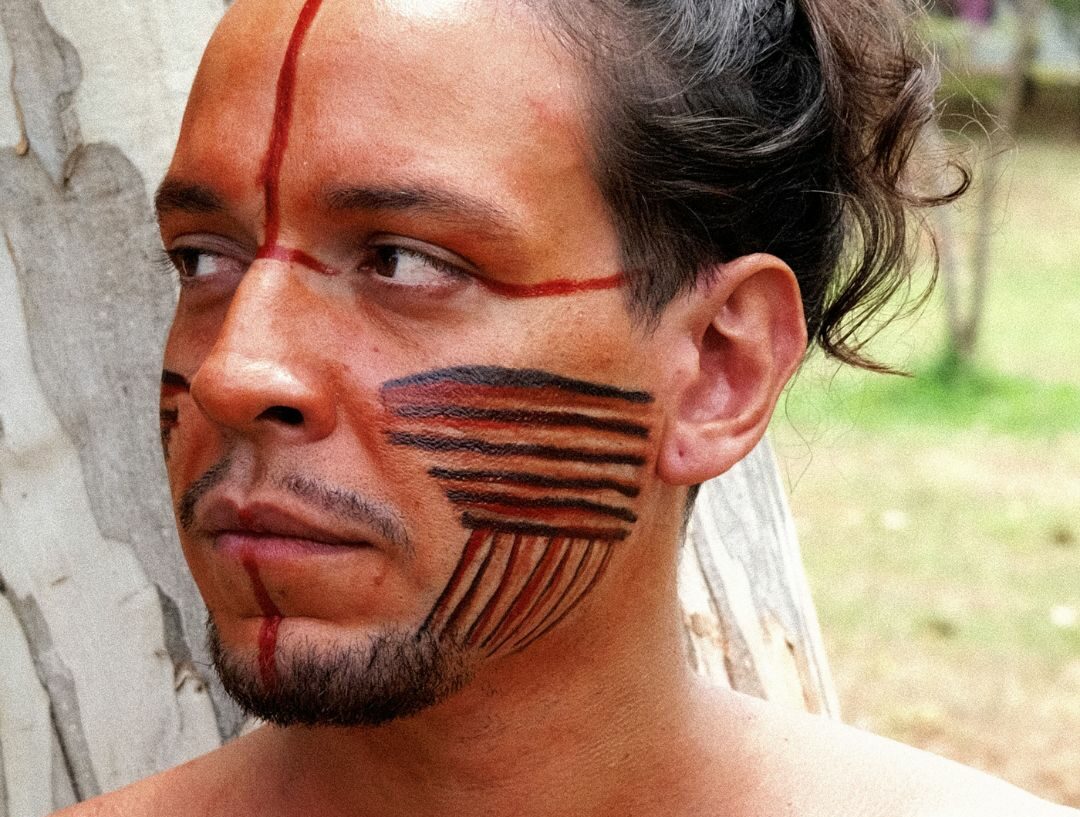
Gustavo Caboco is a Wapichana visual artist from Brazil who works in the Paraná-Roraima network and in the paths of return to the land. His production with drawing-document, painting, text, embroidery, animation and performance proposes ways to reflect on the displacements of indigenous bodies and on the production and resumption of memory. Caboco participated in the 34th São Paulo Biennale (2021) and will be leader curator for the Brazilian pavilion at the Venice Biennale 2024. Photo: © Naine Terena, 2023
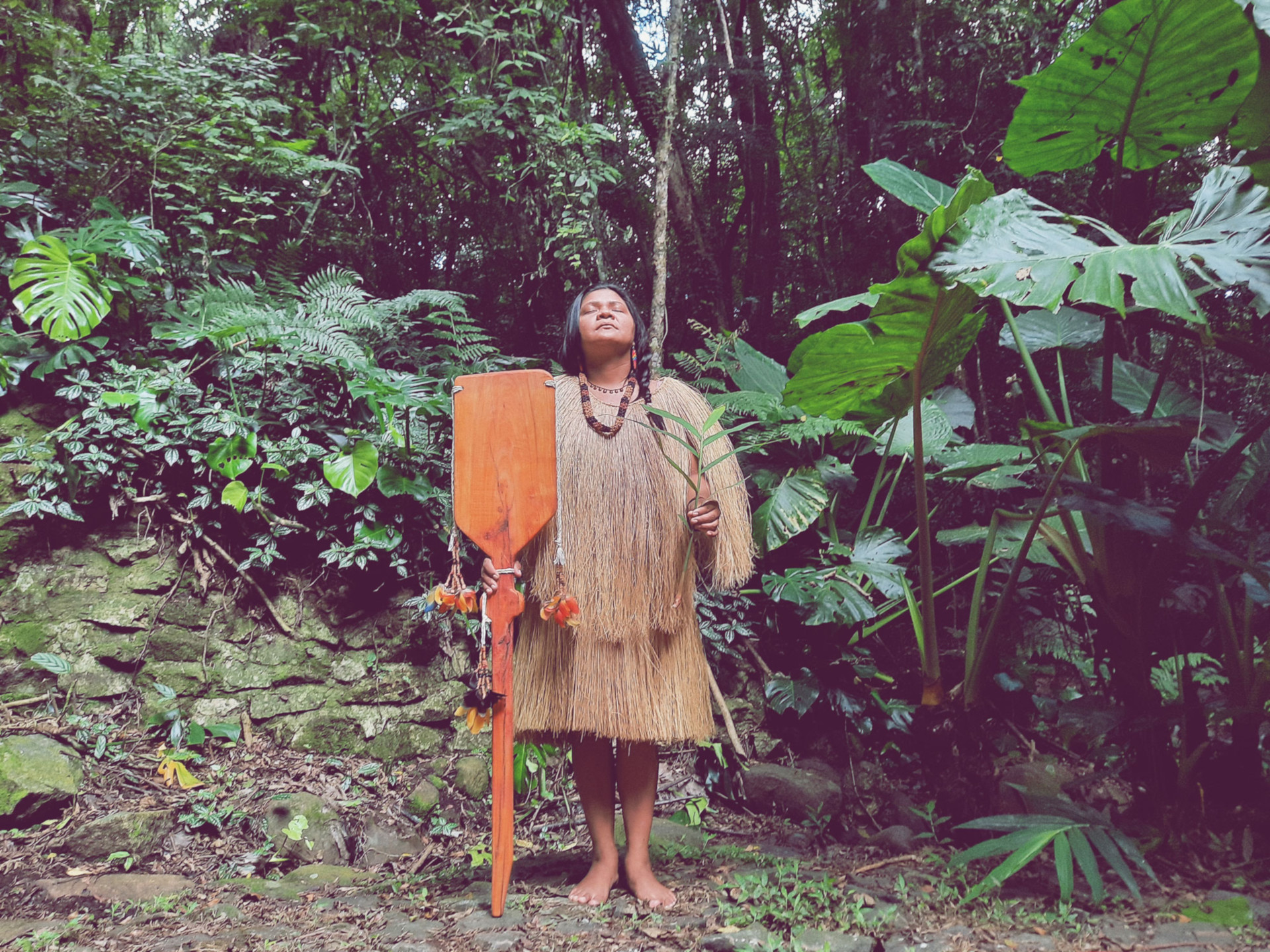
Roseane Cadete is a Wapichana historian and educator who operates within the specific ecosystem of Roraima known as lavrado (savannah). She holds a specialization in Amazonian History from the University of Roraima (UERR) and a Master's degree in Society and Border Studies from the Federal University of Roraima (UFRR). Roseane Cadete is passionate about showcasing Wapichana stories through the medium of art. Her dedication to education, research, history, and art is a testament to her commitment to Wapichana culture, knowledge, and storytelling, as well as her drive to bridge past and present narratives. Photo: © Wanderson Wapixana, 2021

Jamille Pinheiro Dias is the director and a lecturer at the Centre for Latin American and Caribbean Studies at the University of London, CLACS. In addition, she is an affiliate faculty member at the Franklin Humanities Institute's Amazon Lab at Duke University, where she was previously a von der Heyden fellow. Her studies involve environmental issues, Amazonian cultural production, Indigenous arts, and translation studies in Latin America, with a focus on Brazil.

The Wapichana are an Arawak-speaking Amazonian people from northern Brazil and southern Guyana. The colony of British Guiana (1831-1966) separated Wapichana communities from their territory and waterways across English and Portuguese-speaking borderlines. As the first Wapichana members to visit the British Museum’s Wapichana collection, Gustavo Caboco and Roseane Cadete have engaged with these historical and material processes, creating a range of art and community-based practices that respond to the multivalent violence of territorial displacement, whilst ‘threading’ pathways of connection and return for the Wapichana.












The British Museum’s Wapichana collection accounts for more than one hundred objects related to the Wapichana or registered as ‘Wapishana’ or ‘Wapisiana.’ Among the earliest materials related to the Wapichana were brought to London by Robert Hermann Schomburgk, following an expedition to map the colony of British Guiana in the 1830s and that contributed to the separation and displacement of Wapichana communities. Many of these materials were also brought by British pilot and plantation owner Lionel Hector Tracey (L. H. T.) Ashburner, who lived in British Guiana in the 1920s and 1930s. The Wapichana collection comprises spinning and weaving tools such as spindles, bobbins and needles, beaded aprons, basketry made from local vegetal fibres, alongside rattles, arrows and other organic materials like seeds, cotton threads, and animal teeth. As part of their residency in London, Gustavo and Roseane also accessed historical documentation, such as correspondence between Ashburner and curators, descriptions of Wapichana people, and a typewritten glossary of Wapichana language with English translations.
Gustavo and Roseane’s Ateliê-Lavrado project-residency with the Museum’s Wapichana collection began with Wapichana community workshops in the Amazonian state of Roraima, Brazil and continued with a joint visit to London and Oxford, England. Channelling the multisensory and polysemic potential of cotton and related Wapichana practices and tools for hand-spinning cotton into threads, knots, cloths and other kinds of interweavings, the Ateliê-Lavrado prompted a series of collaborative artistic practices, workshops, and public discussions that highlighted the historical significance of their residency for reconnecting Wapichana material and immaterial heritage with living communities.
Beginning in the Cantá municipality, approximately twenty-five kilometres from Boa Vista, capital city of Roraima, Brazil, Gustavo and Roseane participated in a series of workshops with Wapichana members and families from both sides of the Brazil-Guyana border. Photographs of the Museum’s Wapichana materials were also shared and discussed during these workshops. Extending to six days, these community workshops in Brazil explored Wapichana people’s array of relationships and stories woven around spinning, threading, and sewing. These workshops provided the time and space for collective reflection and creation that likewise informed Gustavo and Roseane’s forthcoming visit to London.
During their visit to the UK in June and July 2023, Gustavo and Roseane engaged with archives and materials attributed to the Wapicahna from the British Museum’s collection. In close collaboration with researcher and SDCELAR contributor Dr Jamille Pinheiro Dias (Director of the Centre of Latin American and Caribbean Studies at the University of London’s School of Advanced Study) and SDCELAR curators Magdalena Araus Sieber and Diego Atehortúa, they also conducted research on Wapichana documents and objects from the Pitt Rivers Museum collection in Oxford dated as early as 1907. As an extension of the Ateliê-Lavrado workshop, Gustavo and Roseane responded by documenting their engagement with these Wapichana materials and creating artwork through various modes of representation.
Gustavo and Roseane singing during their visit to the Pitt Rivers Museum collection in Oxford.
One of the activities of Gustavo and Roseane’s Ateliê-Lavrado was the public event, Strengthening Threads, Opening Paths for Museum-Community Healing?, held on 26 June 2023 at the British Museum. In participation with Pinheiro Dias, this event featured incisive presentations and moving performances by Caboco and Cadete, who reflected on the historical and contemporary significance of their visit to the British Museum. Forthcoming educational activities of the Ateliê-Lavrado in London, developed with Dr Francesca Laura Cavallo of Brazil Fooptprint 00 and support from the British Council, were also introduced. This event attracted a large audience who witnessed how, beyond engaging and connecting with Wapichana materials, Gustavo and Roseane’s project-residency continues to transform and expand their meaning well beyond their designation as ethnographic objects.
LEARN MORE >> READ ROSEANE CADETE’S SPEECH HERE
SDCELAR liaised with Brazil Footprint 00 and the Museum’s Learning and National Partnerships Department to invite Gustavo to meet with dozens of students and teachers from Holmleigh Primary School in East London. As an extension of the Ateliê-Lavrado project-residency, these educational activities focused on the art of embroidery for recovering memories and histories and opened a space for students to learn about the displacement of Wapichana communities. This programme also involved assemblies with the artist and 270 students and week-long drop-in workshops for creating the pages to an embroidered book.


Photos: © Brazil Footprint
Gustavo and Roseane’s Ateliê-Lavrado is as collaborative as it is mobile. It forms and adapts to its space and context: whether in Roraima, Brazil, the storage facilities of the British Museum, or the classroom of a primary school in London. Practices like sewing, spinning and weaving cotton threads have provided paths of connection between Wapichana communities with Wapichana collections. From convening workshops and spaces for conversation in both Brazil and the UK, researching and documenting Wapichana material heritage held in London and Oxford collections, to contributing with relevant information that improves the Museum’s database. All the while, creating artwork in response. The vast scope of practices and activities that make up Caboco and Cadete’s project-residency offer important examples of opening paths toward healing within Wapichana communities, as well as for rethinking the terms of relations with institutions like the British Museum.


Gustavo Caboco is a Wapichana visual artist from Brazil who works in the Paraná-Roraima network and in the paths of return to the land. His production with drawing-document, painting, text, embroidery, animation and performance proposes ways to reflect on the displacements of indigenous bodies and on the production and resumption of memory. Caboco participated in the 34th São Paulo Biennale (2021) and will be leader curator for the Brazilian pavilion in the Venice Biennale 2024.

Roseane Cadete is a Wapichana historian and educator who operates within the specific ecosystem of Roraima known as lavrado (savannah). She holds a specialization in Amazonian History from the University of Roraima (UERR) and a Master's degree in Society and Border Studies from the Federal University of Roraima (UFRR). Roseane Cadete is passionate about showcasing Wapichana stories through the medium of art. Her dedication to education, research, history, and art is a testament to her commitment to Wapichana culture, knowledge, and storytelling, as well as her drive to bridge past and present narratives.

Jamille Pinheiro Dias is the director and a lecturer at the Centre for Latin American and Caribbean Studies (CLACS) at the University of London. In addition, she is an affiliate faculty member at the Franklin Humanities Institute's Amazon Lab at Duke University, where she was previously a von der Heyden fellow. Her studies involve environmental issues, Amazonian cultural production, Indigenous arts, and translation studies in Latin America, with a focus on Brazil.
Publications related to women’s and maternal health with Wixárika communities by the author of this exhibition
Gamlin, Jennie B. (2013)
Shame as a barrier to health seeking among indigenous Huichol migrant labourers: An interpretive approach of the “violence continuum” and “authoritative knowledge”
Social Science and Medicine 97 75-81
Gamlin, Jennie B. (2023)
Wixárika Practices of Medical Syncretism: An Ontological Proposal for Health in the Anthropocene
Medical Anthropology Theory 10 (2) 1-26
Gamlin, Jennie B. (2020)
“You see, we women, we can’t talk, we can’t have an opinion…”. The coloniality of gender and childbirth practices in Indigenous Wixárika families
Social Science and Medicine 252, 112912
Jennie Gamlin and David Osrin (2020)
Preventable infant deaths, lone births and lack of registration in Mexican indigenous communities: health care services and the afterlife of colonialism
Ethnicity and Health 25 (7)
Jennie Gamlin and Seth Holmes (2018)
Preventable perinatal deaths in indigenous Wixárika communities: an ethnographic study of pregnancy, childbirth and structural violence BMC
Pregnancy and Childbirth 18 (Article number 243) 2018
Gamlin, Jennie B. and Sarah J Hawkes (2015)
Pregnancy and birth in an Indigenous Huichol community: from structural violence to structural policy responses
Culture, health and sexuality 17 (1)
